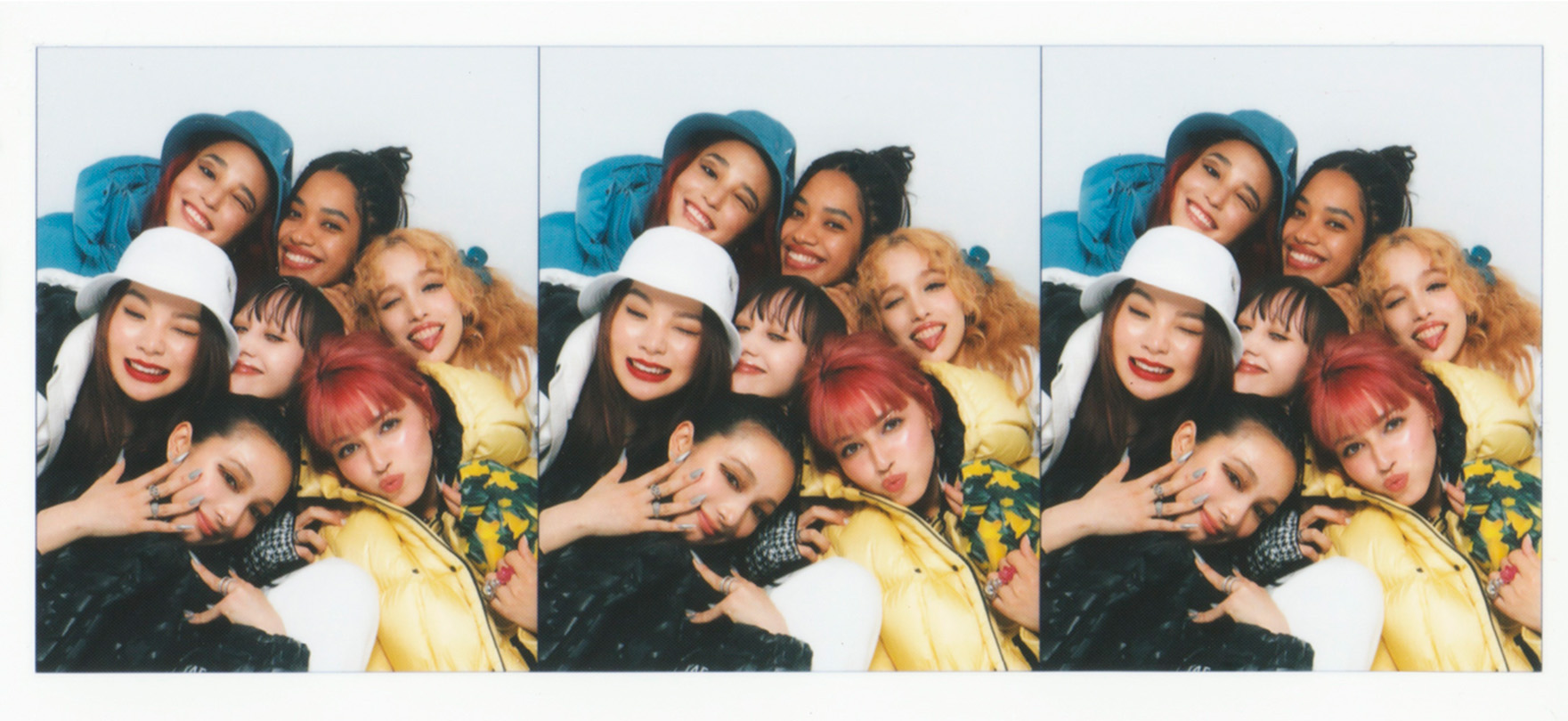This story originally appeared in i-D’s The Summer! Issue, no. 372, Summer 2023. Order your copy here.
For us, one of the defining memories of The Art of Genius – the blockbuster, multi-platform experience staged by Moncler at the end of London Fashion Week in February 2023 – has to be of the white-out room that housed a curious live installation staged by the Italian fashion house and Hiroshi Fujiwara, the Japanese streetwear legend and founding creative director of FRGMT. Titled The Art of Love, attendees watched on while a group of tiny, penguin-like robots – also known as ‘Lovots’ – cooed for affection to their obliging human minders, who were dressed in a collection co-created by Moncler and the Japanese designer.
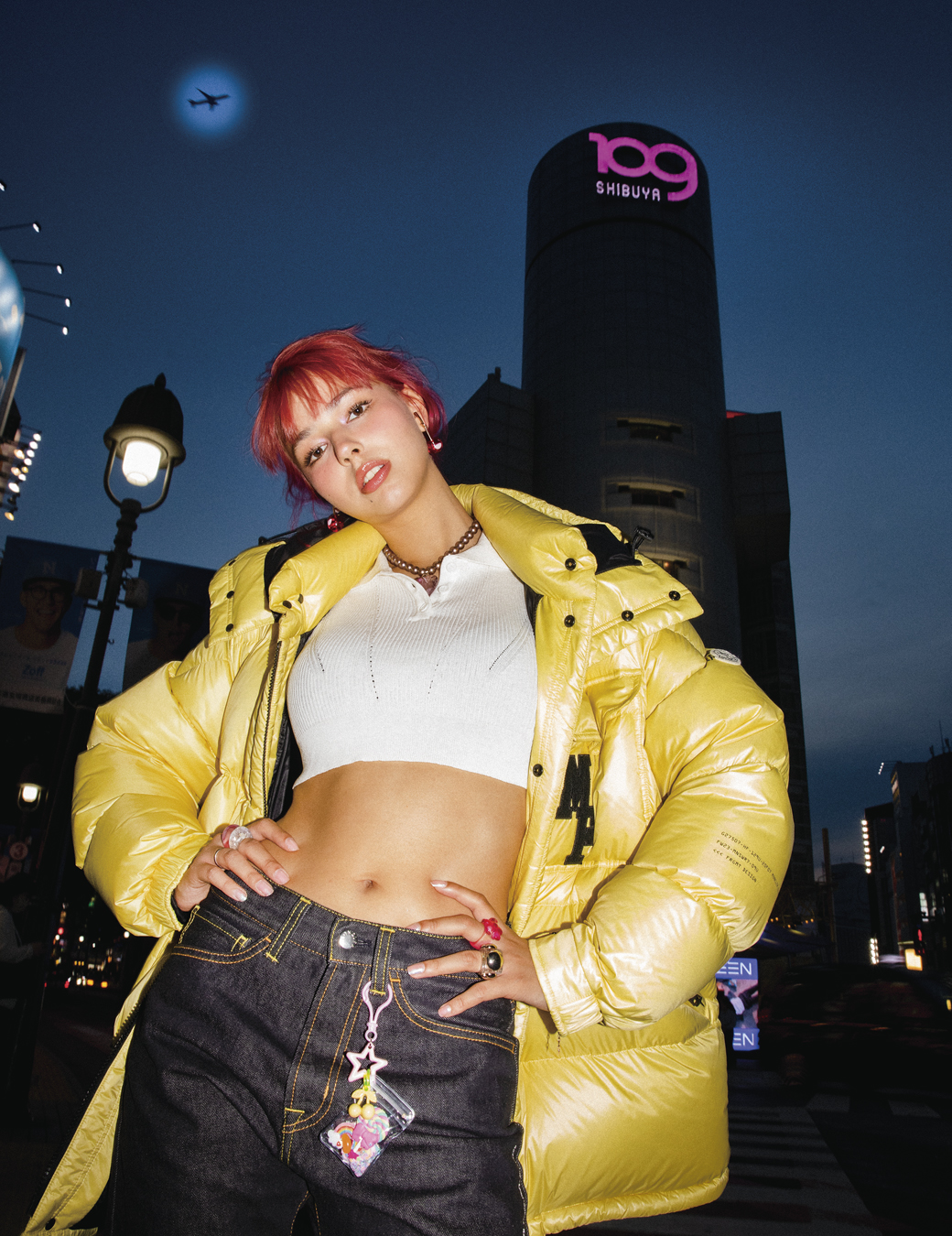
A tender sight, it appeared a testament to the power of love to bridge the boundaries that separate man and machine, leaving onlookers eager to decipher the connection between this heartwarming vignette and the fashion itself. There wasn’t, however, much of one as it turns out from speaking to Hiroshi himself. “There are many ways to show love, and my way of showing The Art of Love was through Lovots,” he says, bluntly. “They don’t necessarily do anything to help you, besides following you around and asking for your love and attention. They’re just weirdly cute.”
Still, while the relationship between the collection and the context in which it was first seen may not be apparent at first glance, study them both more closely and parallels emerge. Just as the spectacle witnessed back in February was an expression of love, so too is Moncler and FRGMT’s co-created collection, with every piece an expression of the codes, textures and garments that each brand holds dear.
For Hiroshi, the creative process began with the discovery of a postcard in the Moncler archives, sent to the brand from a Mont Blanc expedition in 1974. “I thought the postcard was nostalgic and rooted in the brand’s DNA,” he explains – and it reignited his own fond memories of how he first discovered the brand. Accordingly, “I decided to mix in these nostalgic and heritage attributes in my collection,” he continues, with graphics from the postcard transposed onto T-shirts and jackets.
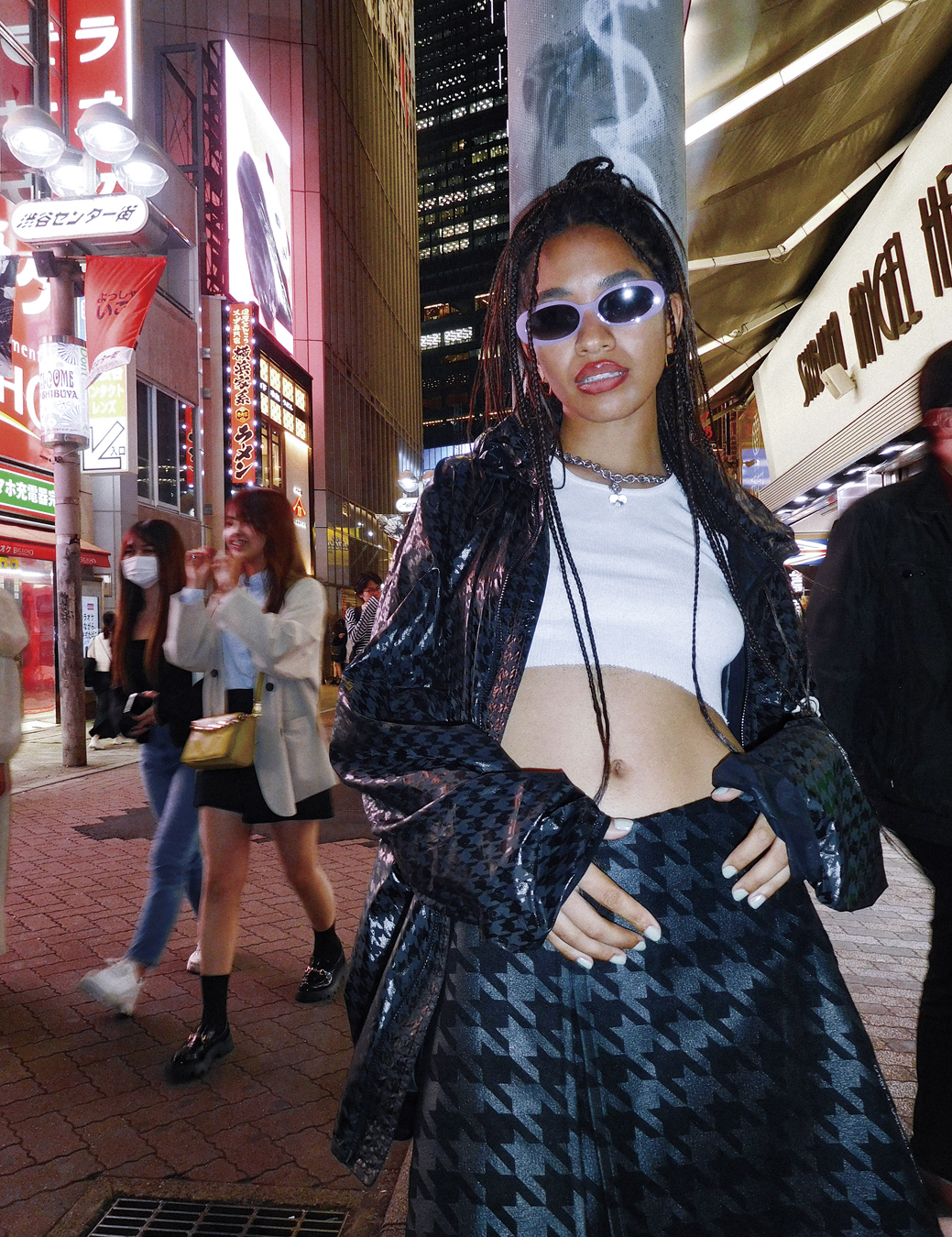
In bringing the collection to life, the FRGMT designer adopted an autobiographical design approach, aiming to create “a collection of things I like and want to wear”, in the hope that others would feel similarly. This led him to contemplate the pieces that he has come to love most, with the varsity jacket – a piece he has visited and reinterpreted both in his own work and in previous partnerships with Moncler – emerging in pole position. “I’ve always liked wearing varsity jackets so it happened naturally, I think it looks good on any generation,” Hiroshi explains, with the baby blue-bodied leather number he designed for his Moncler collection – complete with an embroidered alpine flower at the chest and an individual serial number printed along the sleeve – proving his point.
Elsewhere, Hiroshi was keen to find ways to translate his classic obsessions through contemporary finishes: a notable example being the houndstooth motifs that appear on louche capes and classic padded jackets in down quilting. “It’s probably my favourite piece in the collection,” the designer says of the latter. “I will wear it as soon as winter gets here.”
While it could be said that designing in such a way is self-interested, it could also be said that good design is self-interested by nature. As Hiroshi has demonstrated, often, it is the result of honestly asking yourself what you like – or even love – when creating it, and then putting it out into the world in the hope that others love it just as much as you do, too.
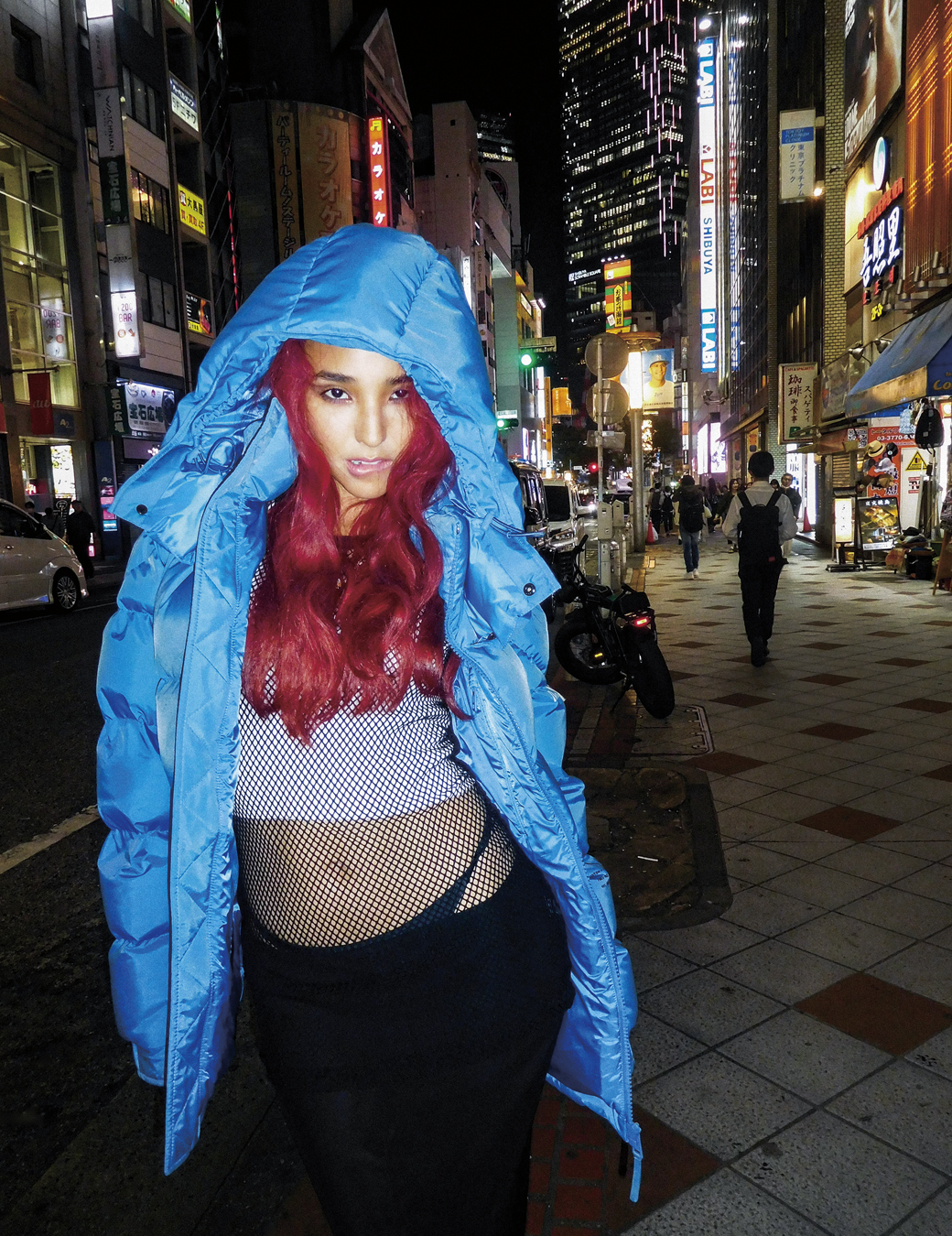
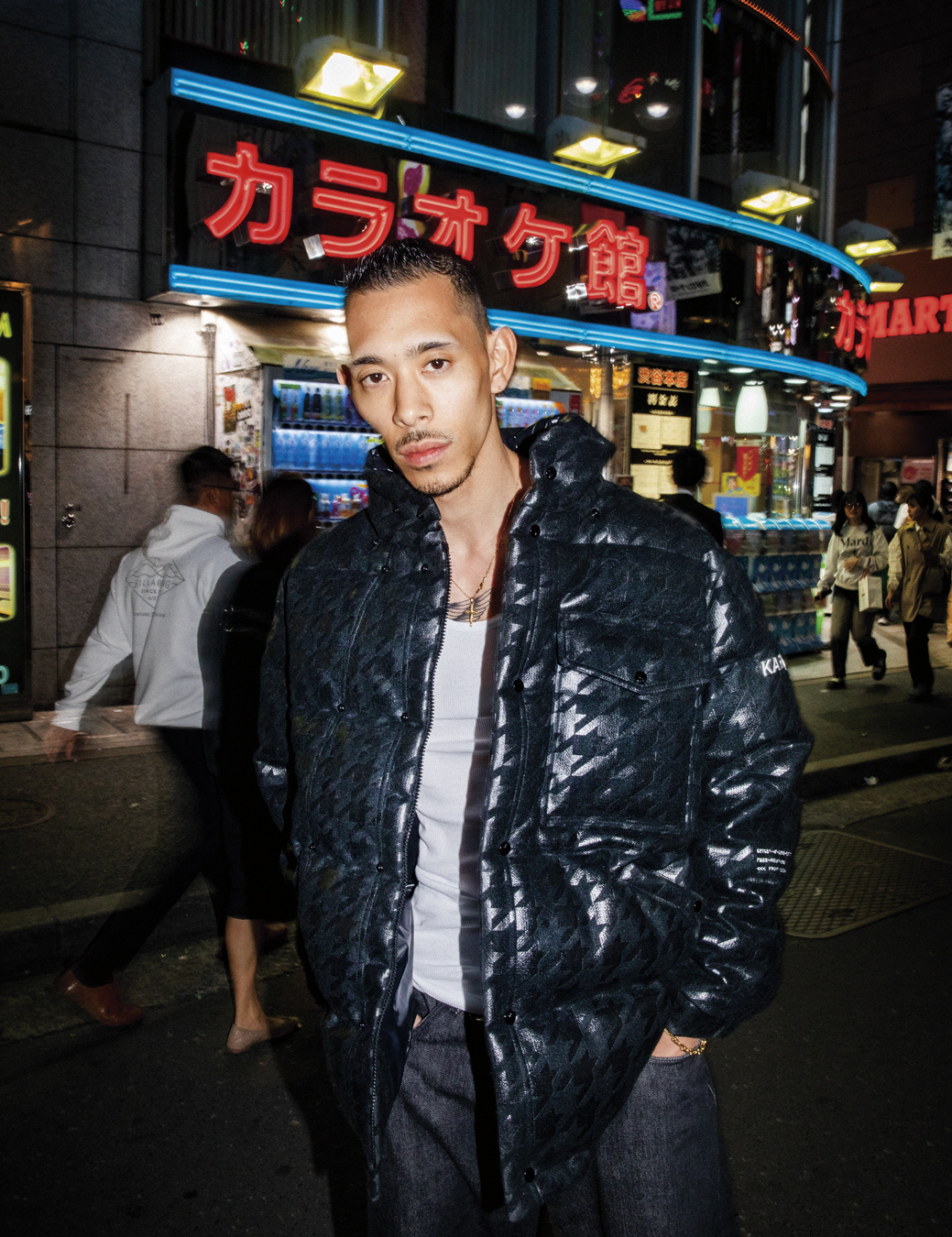
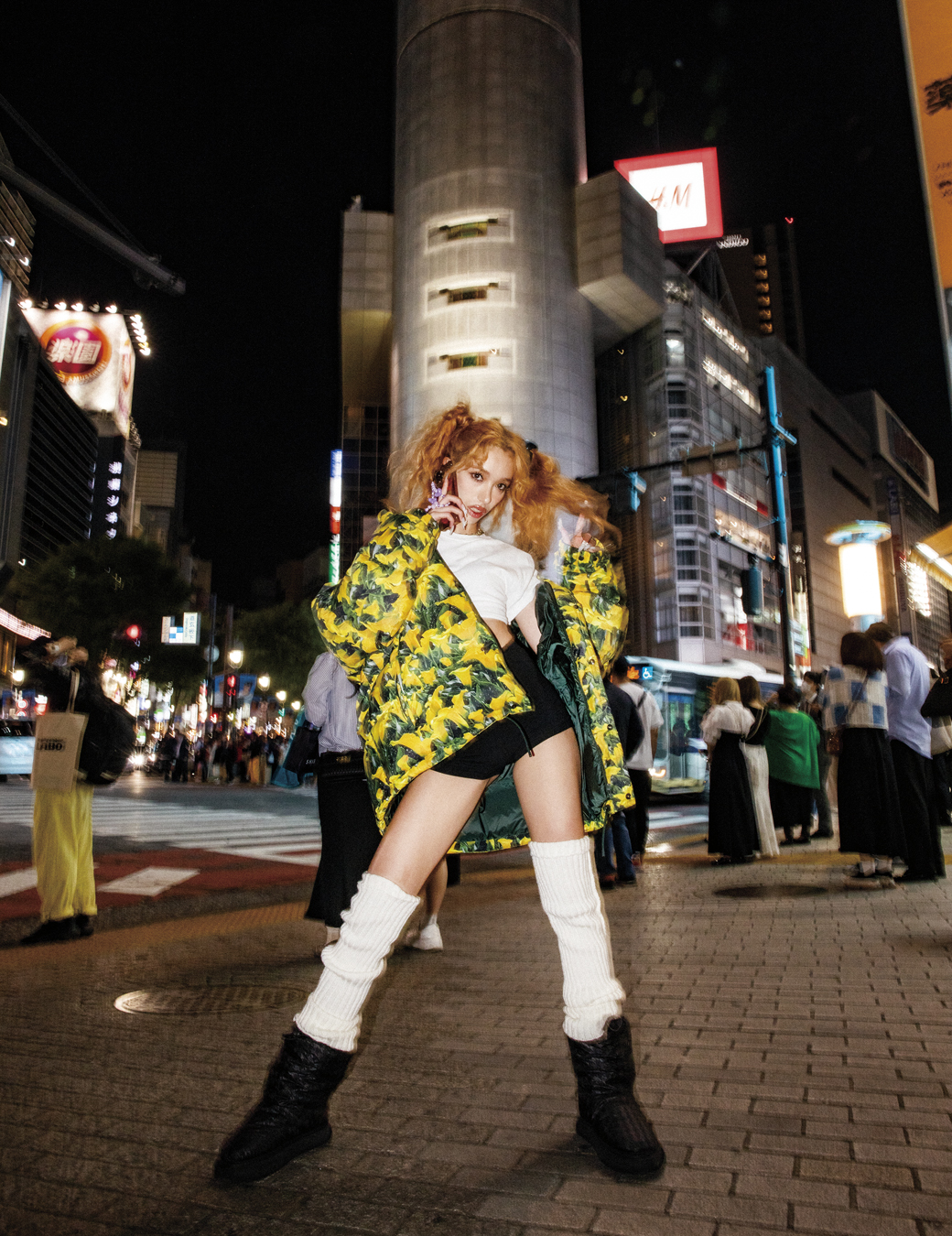
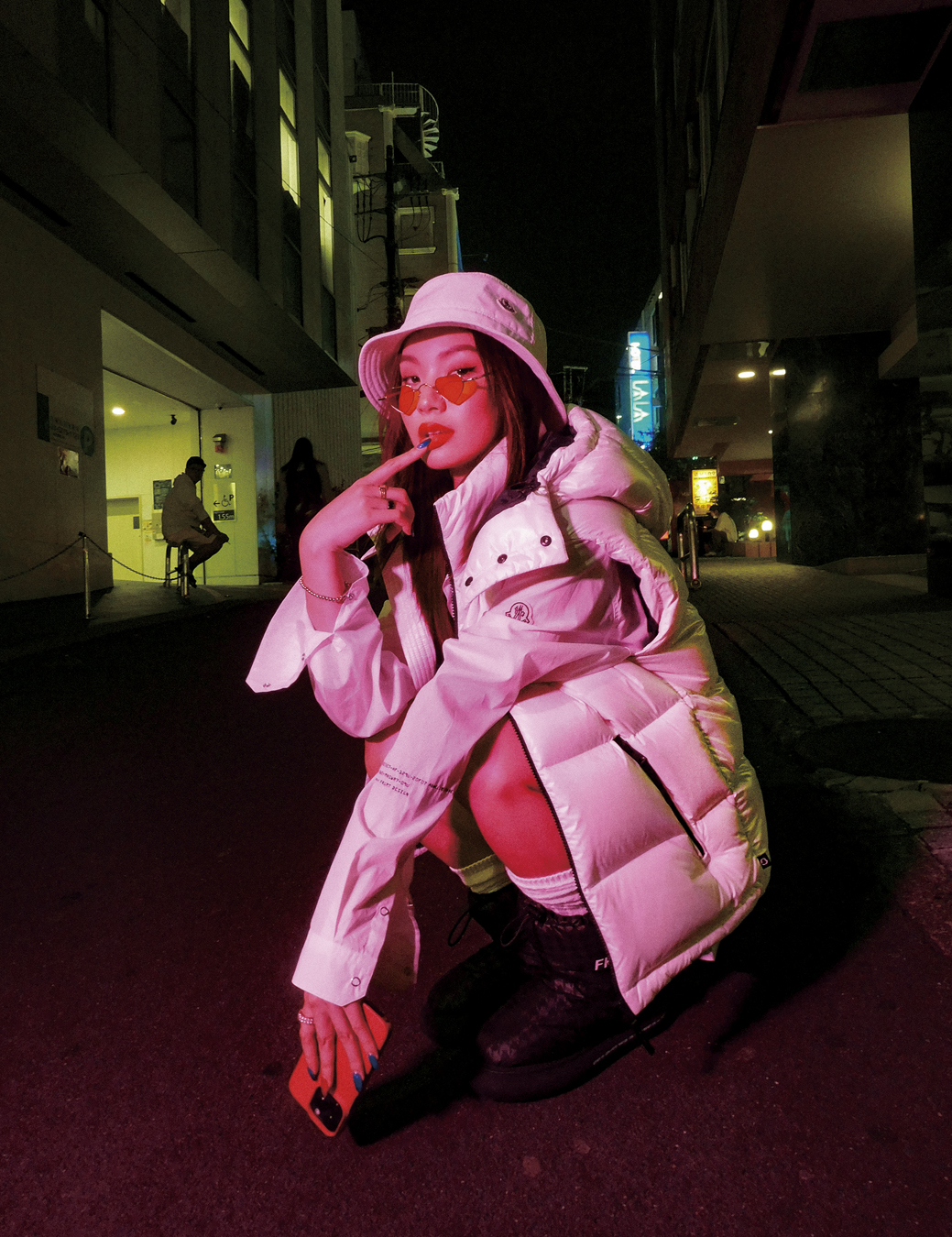
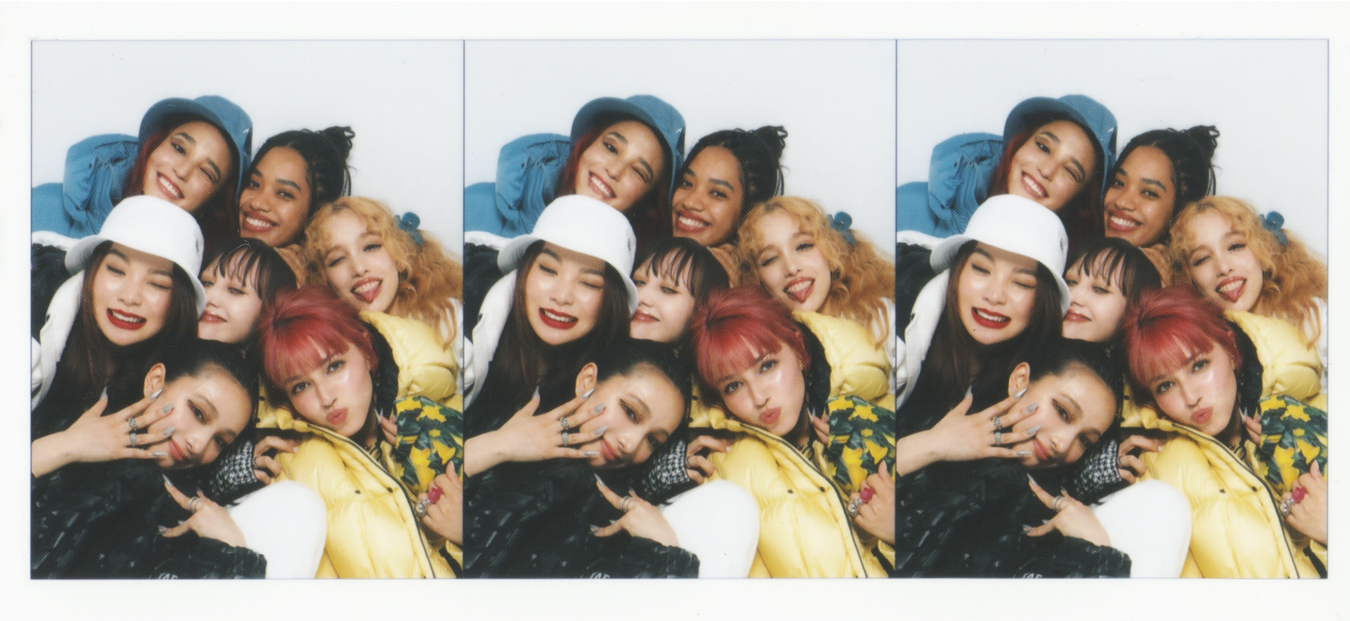
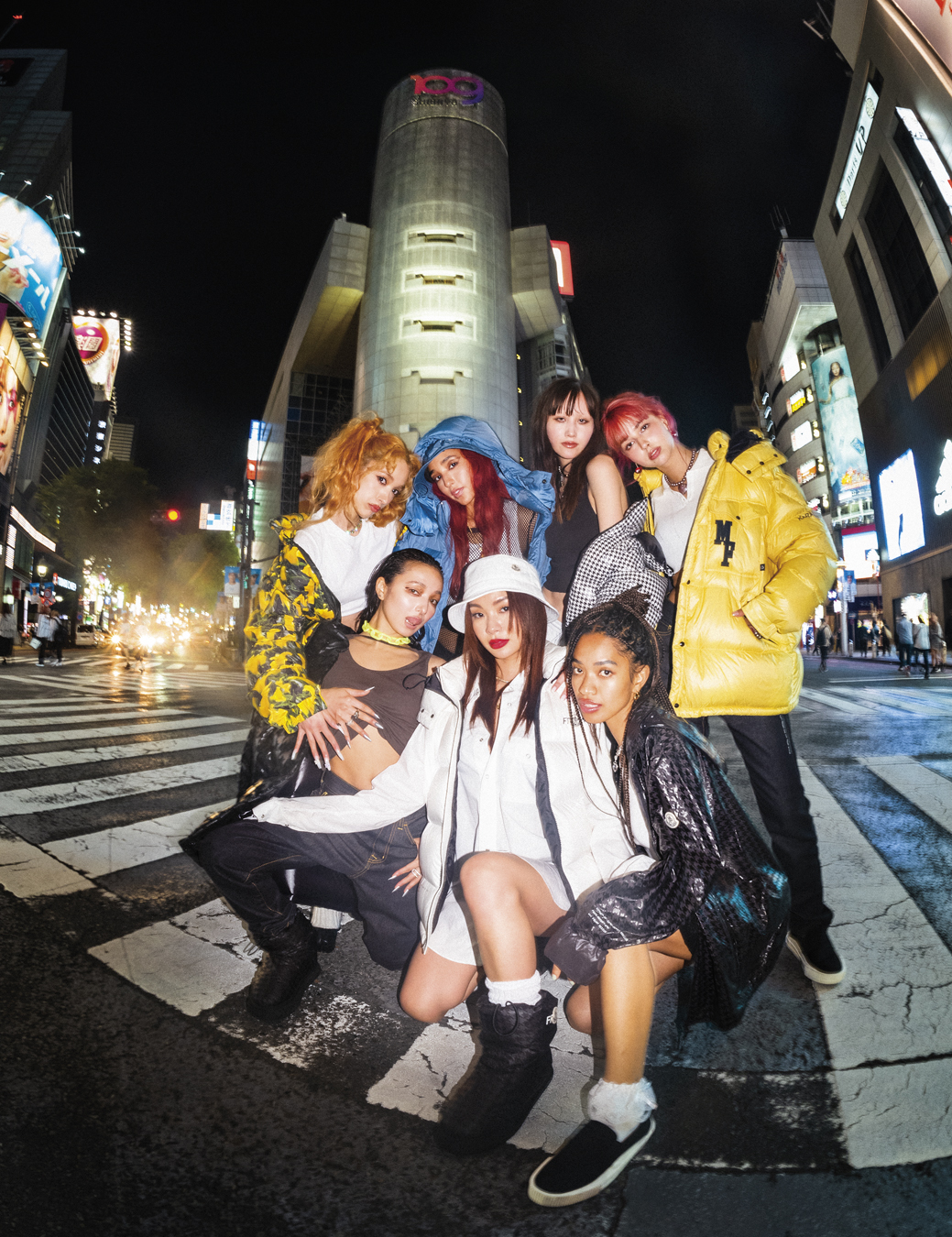
Credits
Photography Jiro Konami
Fashion Mac Huelster
Hair Tsubasa
Photography assistance Tatsuya Maruyama
Fashion assistance Taichi Kawatani
Production Naohiro Tomura at 1729 Agency
Special thanks Shimpei Nakagawa
Models Ayumi Isabel and Sakura at Pump, Bibi at Gabriela, Elena Kendall at Tomorrow, Bibi Yua, IO, Lina Ohashi, Nana Momosaka
All clothing MONCLER X FRGMT AW23
